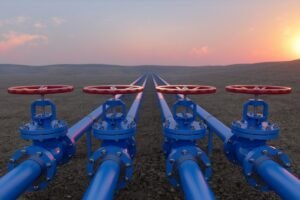Building owners are often unaware of the impact their properties have on the environment. A revolutionary algorithm, however, may soon change that by shedding light on their carbon pollution.
This year, New York City is implementing strict measures to reduce carbon emissions from buildings. But before this can be done, owners must first understand the amount of pollution their properties produce.
According to the U.S. Energy Information Administration, electricity alone accounts for 60% of energy use in commercial buildings. While there are tools available to estimate carbon emissions based on electric bills, these are often rough approximations. With the rise of renewable energy sources, such as wind and solar, it’s becoming increasingly important to not only know how much electricity a building is using, but also when it is being used.
That’s where Nzero, a pioneering carbon-tracking startup, comes in. By utilizing a newly developed algorithm, Nzero is able to provide building owners with detailed reports on their carbon pollution, right down to the hour.
While some owners may already have this data thanks to advanced meters and sensors, many do not. “Better data leads to better outcomes,” explains John Rula, CTO of Nzero, in an interview with TechCrunch. “But it should not be a barrier.”
This issue is particularly challenging for a type of real estate investment trust (REIT) known as a triple net lease. In this case, the REIT is responsible for a building’s emissions, but has limited insight into its utility usage since the tenants are responsible for paying the bills.
“They’re often struggling to get this data from their occupants, with little success,” notes Rula.
Fortunately, Nzero’s algorithm is able to generate accurate estimates (using a building’s address and additional information, such as square footage and heating/cooling systems) that surpass the previous methods employed by owners.
Not only does Nzero provide valuable data on carbon pollution, but their software also offers solutions for reducing emissions through cost-effective upgrades and retrofits.
“There are various steps and challenges involved, such as data collection and compliance reporting, but they are not the ultimate goal,” says Rula. “Our aim is to accelerate and promote the decarbonization of buildings.”








